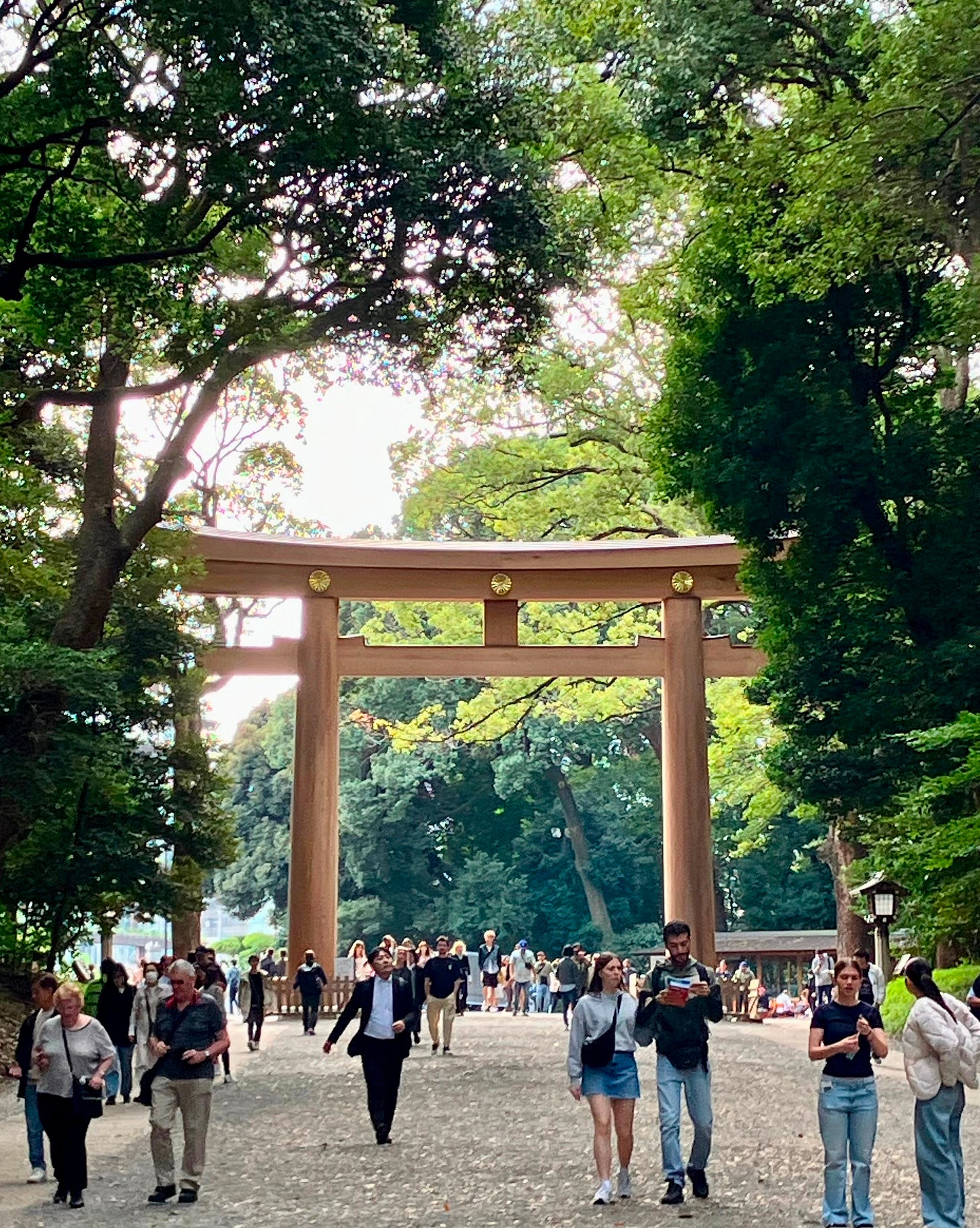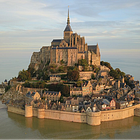Check out the young couple at the bottom right of this photo. They’re not us, but they may as well be…
He is the self-appointed tour guide and mandarin of the maps. He’s saying, So, here we are. At, um, Medgie…Django. Something. Top three in Lonely Planet. Some kind of shrine. What do you reckon, an hour? She is thinking, I wonder if there’ll be a decent coffee?
Look at all of us. Streaming into this place like rugby fans on the way to the stadium.
There’s a concept from quantum physics that I’ve never got my head around, although I think it might apply here. It goes like this:
The very act of observation impacts the state of a particle.
It’s reasonable to suggest, don’t you think, that most of the people in this photo are tourists. Only here because Lonely Planet (or some such authority) have it on their ‘Top Ten Tokyo’ list. Here, in other words, to observe…
But: the very act of observation impacts the state of the particle.
Meiji Jingu is a shrine, created in memory of a famous Emperor, Meiji, and his Empress, Shoken. In the1860s—when, in Aotearoa, the Crown was taking Māori land by force—the West was trying to break into Japan. Meiji and Shoken responded by promoting friendship with other countries. They introduced Western ideas and technologies while preserving the Japanese identity. They laid the foundations of modern Japan:
The nation’s core shall be revitalised by gathering knowledge from all over the world, while cherishing our beautiful culture and tradition.
Unlike most everywhere else, Japan was never colonised.
Meiji died in 1912, Shoken in 1914, and Meiji Jingu was created in their memory. 100,000 trees were donated from all over Japan and a spectacular Shinto shrine built.
And now we’re all here. We didn’t bow, as we should have, before passing through that massive gate: before entering a sacred space. We’re not here to pray, or to make an offering. We’re here because… Well, here we are.
And that changes the state of the particle. It doesn’t really feel sacred. Rather, secular. Over-exposed, commercialised.1
And yet, having visited, I do now know a little more about Japan. I know, for instance, that Shinto is the original religion. That it’s not really a religion: there was no revered founder, no sacred text. It’s more a belief system; a way of making sense of the world. And, therefore (it seems to me), similar to te ao Māori, and other indigenous world views. Shinto involves worshipping ancestors as guardians of the family and showing respect to the myriad kami (in te ao Māori, atua) who reside in the mountains and the forests and so on. In Shinto, humans are not separate from nature. ‘Only by both receiving the blessings of nature and accepting its rage can we maintain a harmonious connection to the world around us’.
All of which brought to mind a post I wrote a while ago, about tourists and pilgrims (link below), including this quote from Martin Hakubai Mosko:
The beauty of a garden, or of anything else in our lives, awakens something within us beyond our daily concerns.
Which, when you think about it, is what you’d hope for, from a shrine and a forest.
So here we are.
The Traveling Wilburys






And the coffee was hard to find!
I wonder what they would have thought of the world war & Japans role in that? Not quite one with nature?